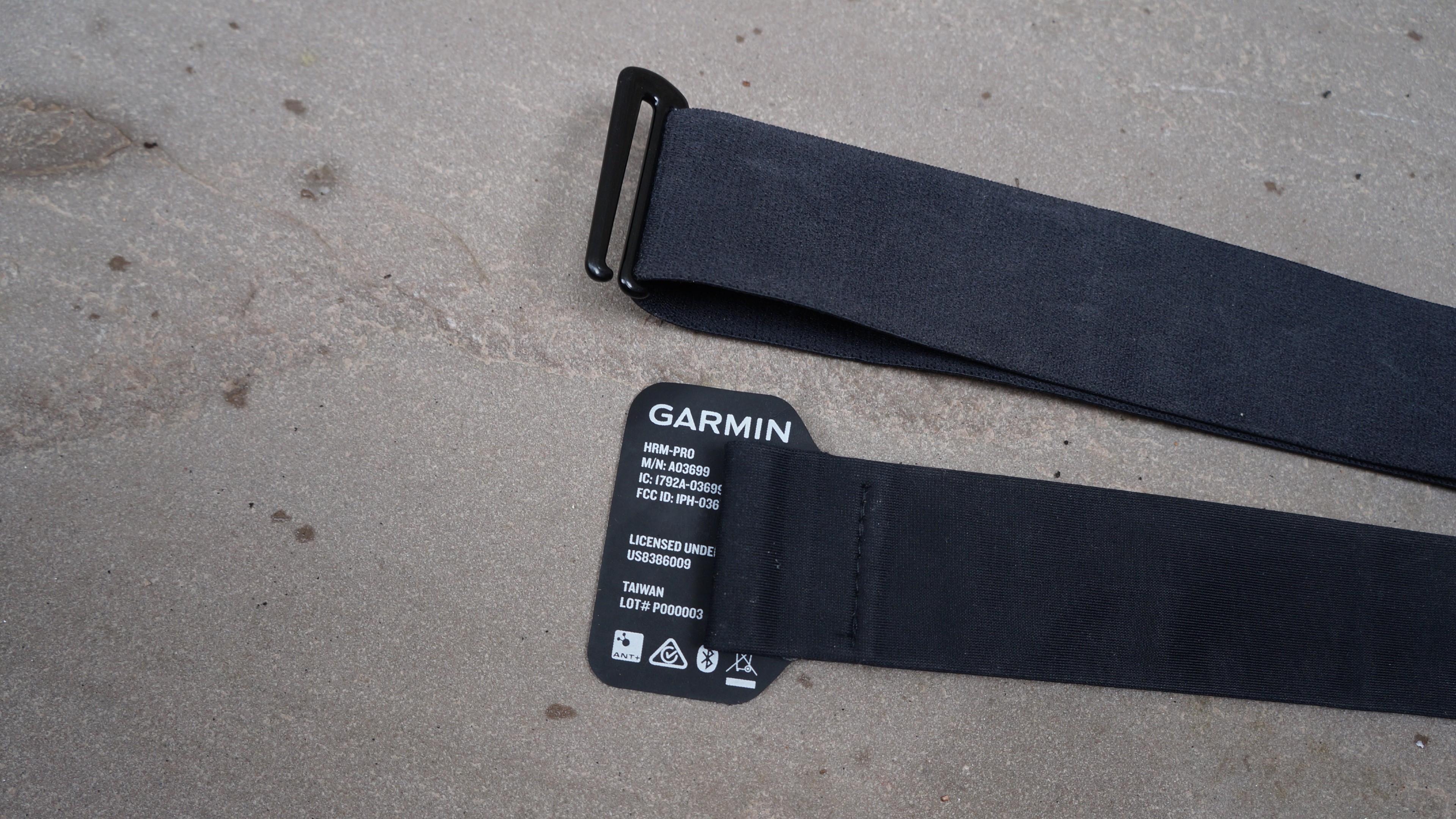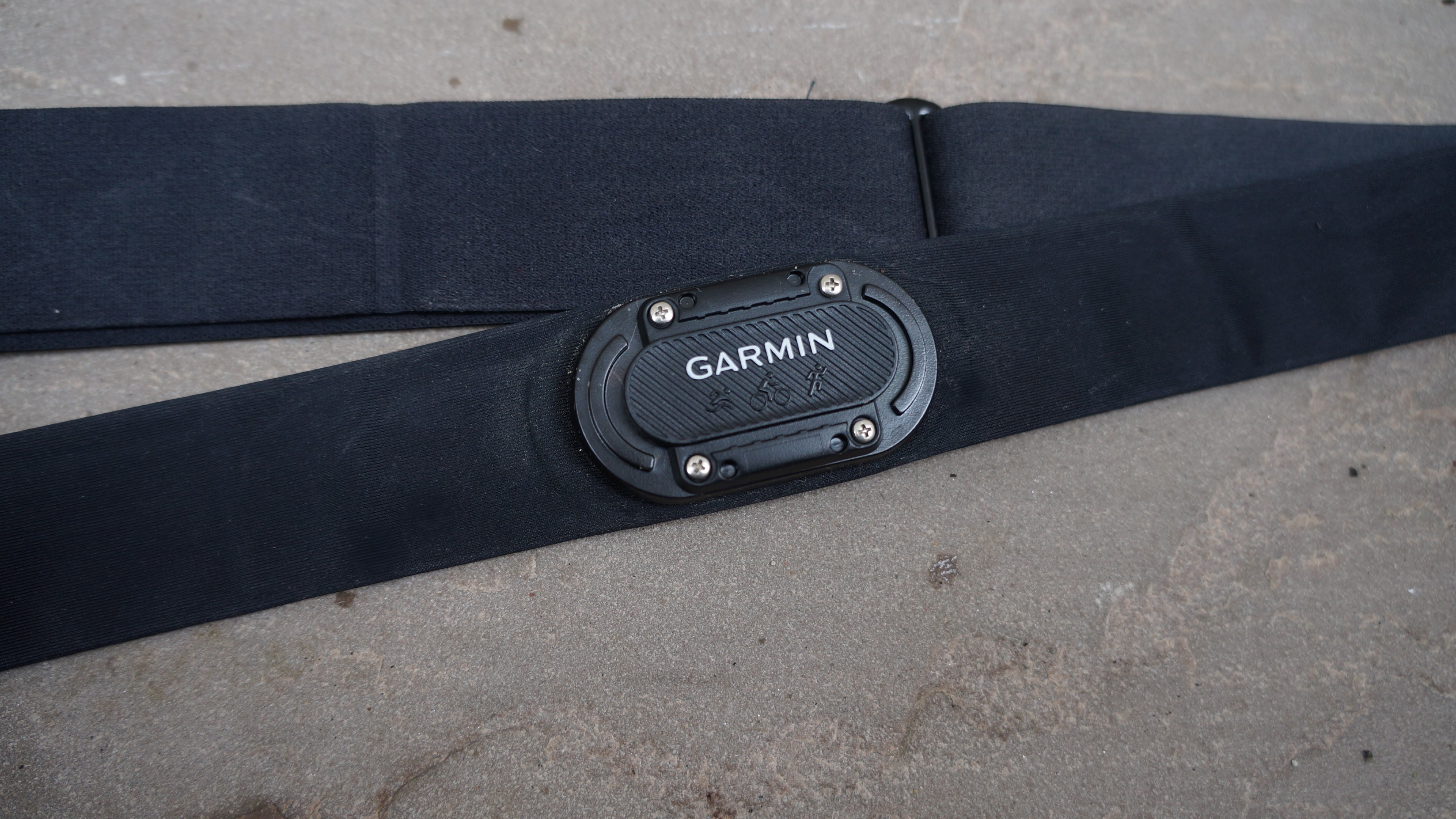Garmin HRM Pro review
The Garmin HRM Pro comes with a lot of data tracking features - though most of them aren't specific to cycling

I’m left with no quibbles over this device's reliability or ability to cope with sweat. Garmin’s HRM Pro has some neat party tricks up its sleeve too. However, the swim, bike, run logo on the face of the device says it all. If you mainly ride a bike, the Dual version is a better investment.
-
+
Consistent
-
+
No battery issues
-
+
Extra data recording
-
-
Additional features not cycling-specific
You can trust Cycling Weekly.

Garmin’s Heart Rate Monitor Pro does much more than just provide a read out of beats per minute. It can store data, as well as monitoring steps and more - but it’s worth weighing up how much you’ll use these capabilities before forking out for them.
Garmin Heart Rate Monitor Pro: the spec
If you’ve not held a new heart rate monitor for a while, you may be surprised to note some changes in the construction of the strap. I know I was. The front portion is made from a much thicker fabric, with rubberised inserts that sit at either side of your rib cage. The back is stretchy and adjustable, with a hook for closure.
The device itself sits on the outside of the front portion. All battery changing, via four small screws, takes place at the front of the device. Where I’m going with this is that internals don’t go anywhere near the skin, which is an improvement upon designs of old.

The strap measures 60cm at its shortest and 106cm at its longest, or 142cm if you use an extender. I nearly always tuck a heart rate monitor under my sports bra to ensure it stays put (NB, this isn’t advised by HRM brands), but in this version I don’t actually have to, it does fasten snugly enough to stay put on its own which is a wonderful surprise.
The device takes standard CR2032 batteries, which are easy to obtain and Garmin promises a year long battery life. The HRM Pro communicates via Ant+ (via unlimited connections) as well as Bluetooth (two connections - so you can send data to a computer and Zwift on an iPad, for example), is assured over a temperature range of -10°C - 50°C and promises waterproofing for swimming.
On to the more interesting elements of functionality. The HRM pro doesn’t just provide live heart rate data to your cycling computer, it can store it all itself and then transfer it directly to your Garmin Connect account and thus third party apps like Training Peaks.
The latest race content, interviews, features, reviews and expert buying guides, direct to your inbox!
The primary use case for this is sports where you’ve not got a computer on you - such as swimming or combat sports. For cyclists, the use case is pretty limited to track cycling, where you can’t have a computer in view, though most riders fix their computer to their seatpost.

Other features include the ability to count your steps through the day, as well as ‘intensity minutes’ and calorie burn, and send that information to Garmin Connect as part of its lifestyle tracking features. However, this does mean wearing the heart rate monitor during the day which presents some issues.
The heart rate monitor can pair with a Garmin watch (such as the Fenix 6) to capture running data, such as stride length and cadence, and it can also record swimming intervals. Which is all very useful should you dabble in triathlon.
Garmin HRM Pro: in use
Perhaps if you’ve been a bad human, you’ll come back in a second life as a heart rate monitor. It’s not a great life is it - being pressed against sweaty skin over, and over again. For that reason, the primary test for a heart rate monitor is its ability to keep working after hours of abuse via salty bodily fluids. In that respect, the HRM Pro has passed with flying colours. I’ve used it as my only heart rate monitor for well over six months and it is still in the green at ‘Ok’ (you can check that via Garmin connect, though I don’t have a percentage drained which would be nice).
I have no quibbles with the data, either. My last 10 mile time trial ride shows an average heart rate of 187bpm and a max of 194bpm. I’ve not compared this against another device but I’ve ridden enough 10 mile time trials to know that this is bang on where it should be for the effort.
So - the basic requirements of a cyclists are met: heart rate info is accurate, no drop outs or battery issues.
The Pro comes with many other features. There’s the step analysis, for example. I tried this out and saw new steps appear in my health stats on Garmin Connect, which is pretty cool. However, I wouldn’t want to use this as a daily measure. Since the strap is next to my skin during intense cycling sessions, there is no way I’d wear it during the day.
I do run a little during the off-season, so I tested the running dynamics using a Garmin Fenix 6. The data was all transmitted as expected and makes for some fun extra analysis if you’re that way inclined. Personally, I just run for a little winter fitness so I have little grasp on what I’m aiming for, there! I did discover that ‘vertical ratio’ refers to efficiency, effectively your ‘bounce’ divided by stride length. If I was aiming to run with some sort of propulsion in the direction of a goal, I could see this being extremely interesting to track.

With pools closed, I didn’t have a chance to try out the swimming interval info - though being a reformed ex-triathlete I can see the merits. I used to own a ‘Pool Mate’ which tracked length and pace, but I whacked it on the lane rope a number of times.
Garmin Heart Rate Monitor Pro: value
My questions around the HRM Pro really lie in the value. At £119.99, it is a lot more expensive that the standard HRM-Dual (£59.99). Asked what real benefit the Pro has over the Dual, for a cyclist, even Garmin admitted that there wasn’t much reason to opt for the more expensive device.
“HRM-Pro and HRM-Dual are quite similar for someone who is only using them for cycling,” a representative told me. “If the user does other sports then they will benefits from enhanced swimming stats including heart rate and running dynamics (when paired with compatible watch). The HRM-Pro does boast mobile connectivity, meaning it can send steps, calories and intensity minutes.”
In short, the Garmin HRM Pro is reliable and does everything it is billed to do. If you run and are aiming to achieve results there, there are some cool benefits. But if your primary activity is riding a bike, I’d advise you spend half as much on the Dual model.
| Weight | 52g | Row 0 - Cell 2 |
| Strap length | 60-106cm, 60-142cm with extender | Row 1 - Cell 2 |
| Connections | Ant+ (unlimited), Bluethooth (two channels) | Row 2 - Cell 2 |
| RRP | £119.99 | Row 3 - Cell 2 |
Michelle Arthurs-Brennan the Editor of Cycling Weekly website. An NCTJ qualified traditional journalist by trade, Michelle began her career working for local newspapers. She's worked within the cycling industry since 2012, and joined the Cycling Weekly team in 2017, having previously been Editor at Total Women's Cycling. Prior to welcoming her first daughter in 2022, Michelle raced on the road, track, and in time trials, and still rides as much as she can - albeit a fair proportion indoors, for now.
Michelle is on maternity leave from April 2025 until spring 2026.
